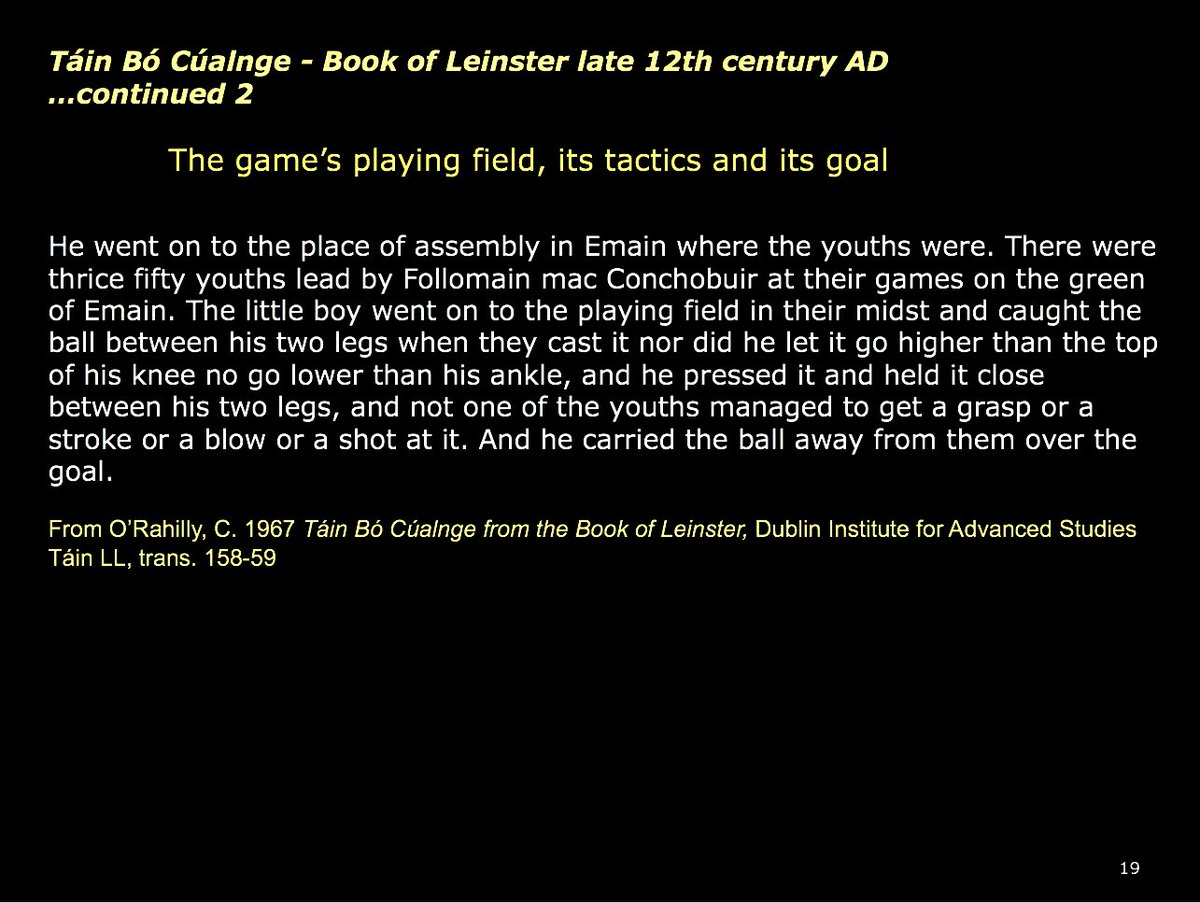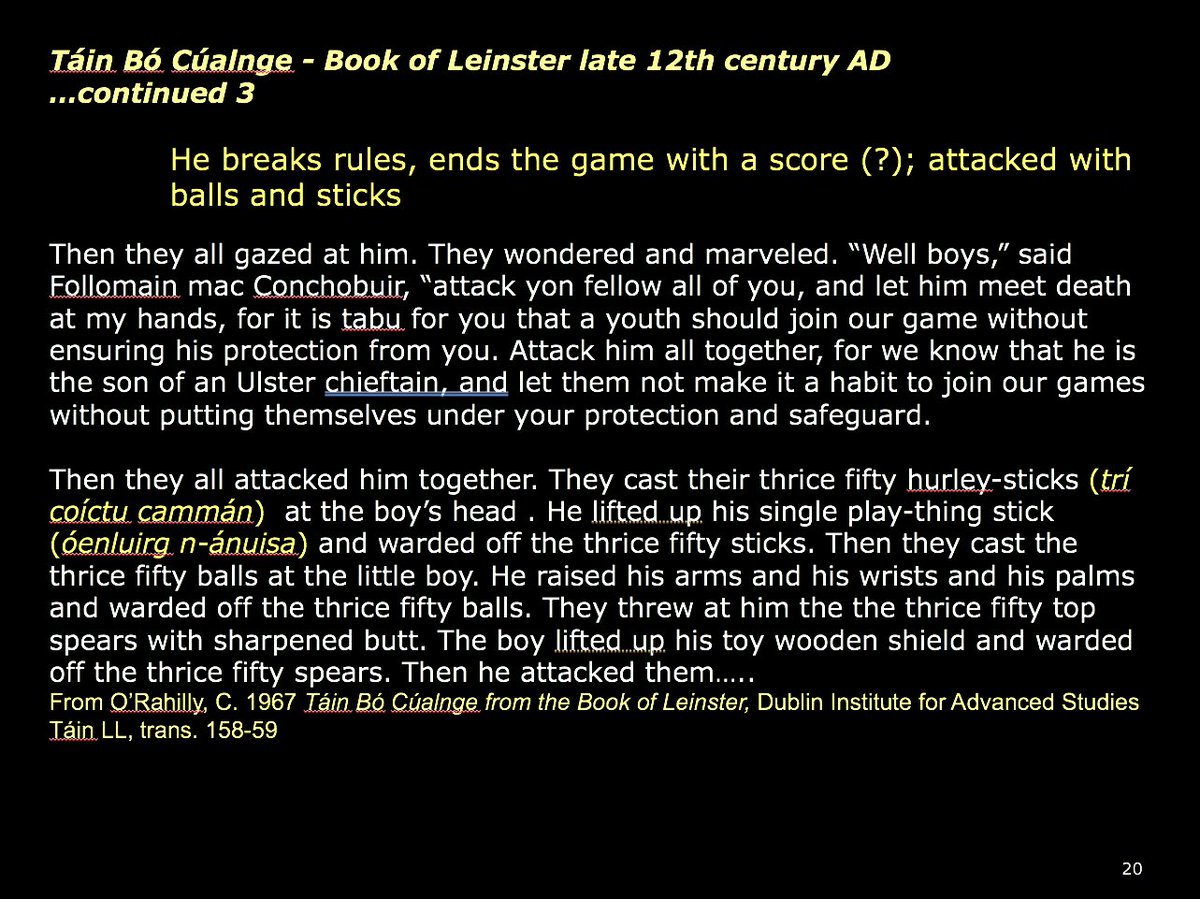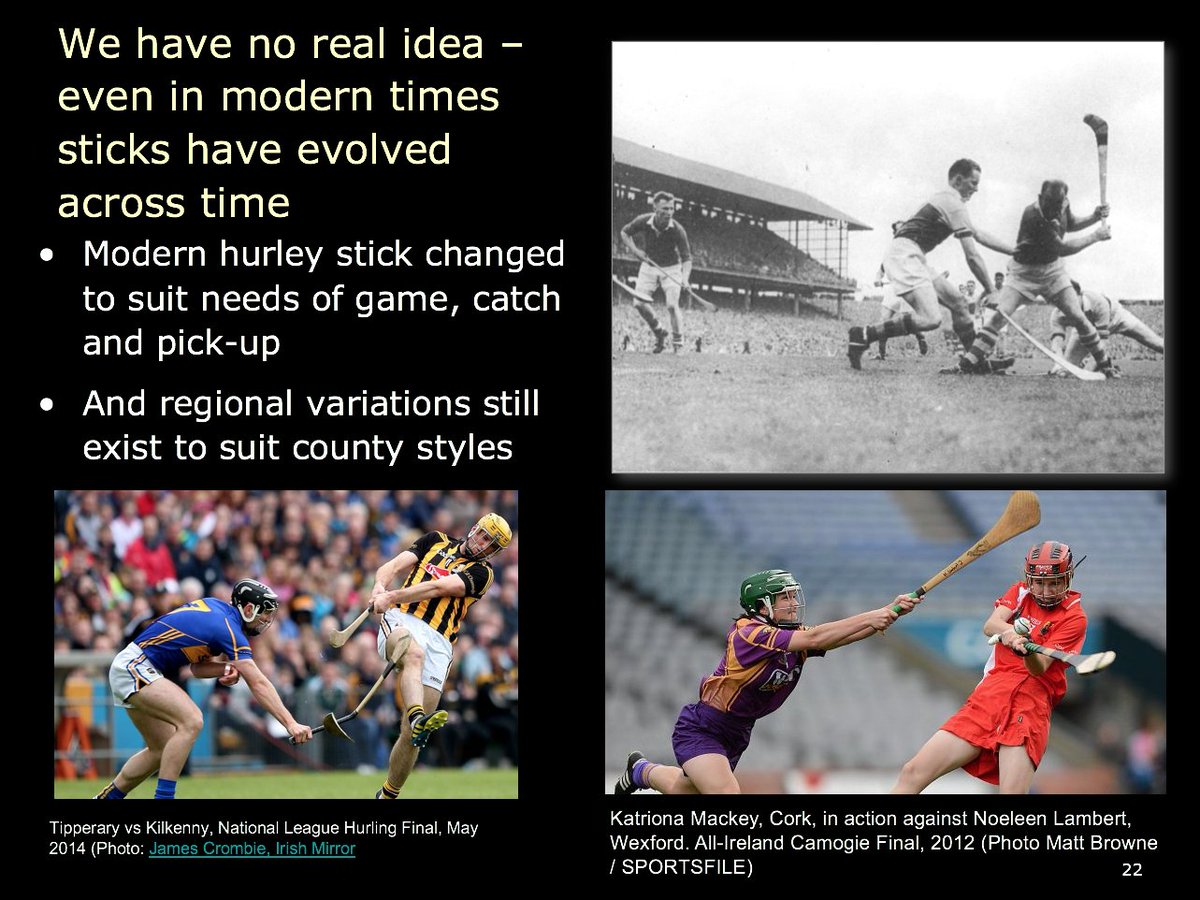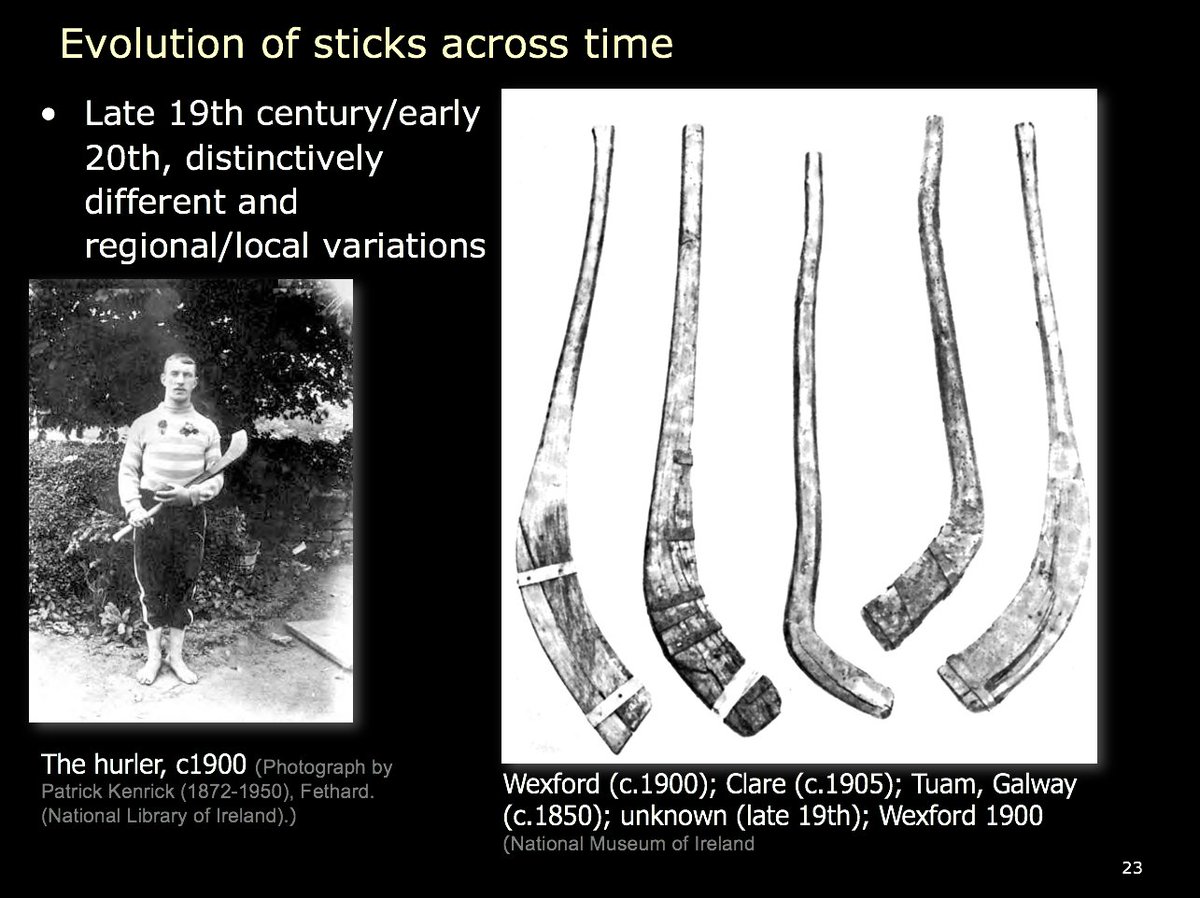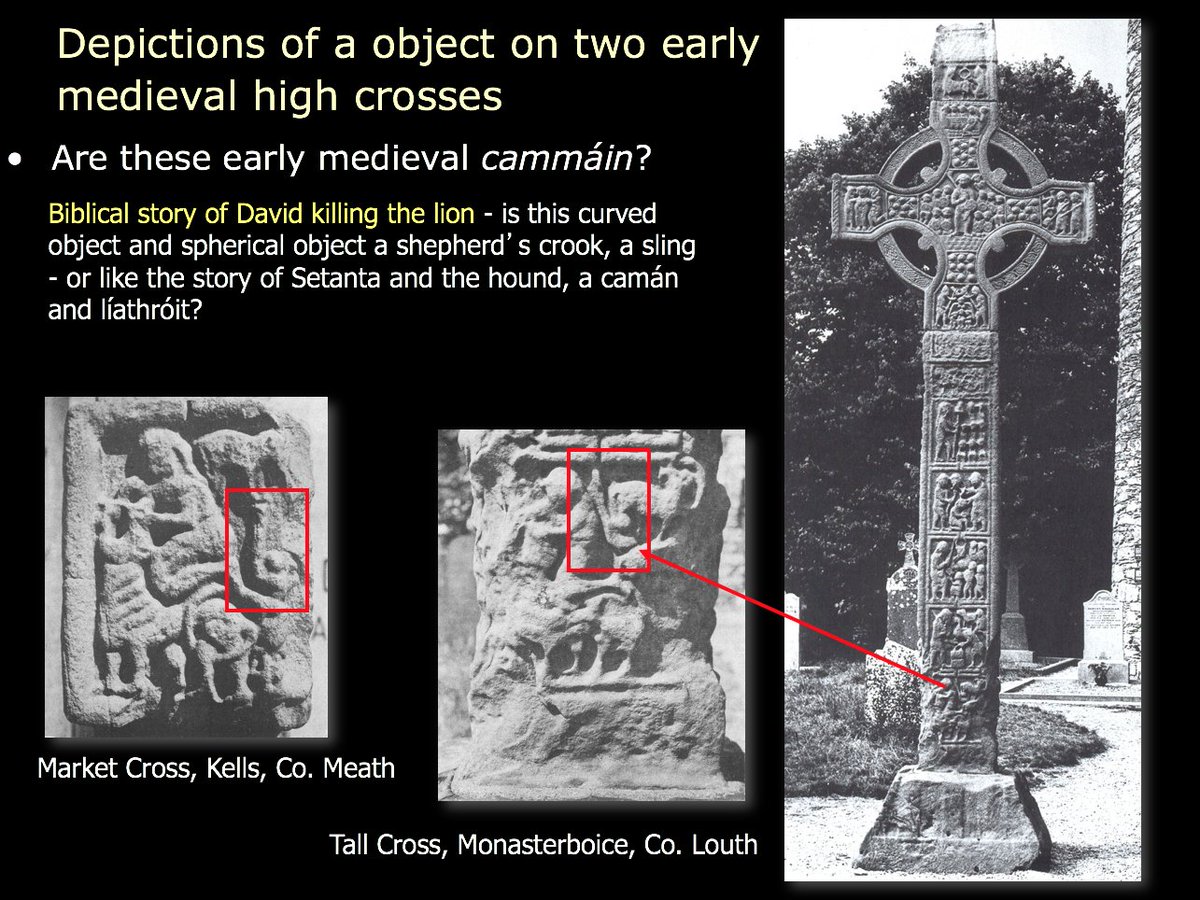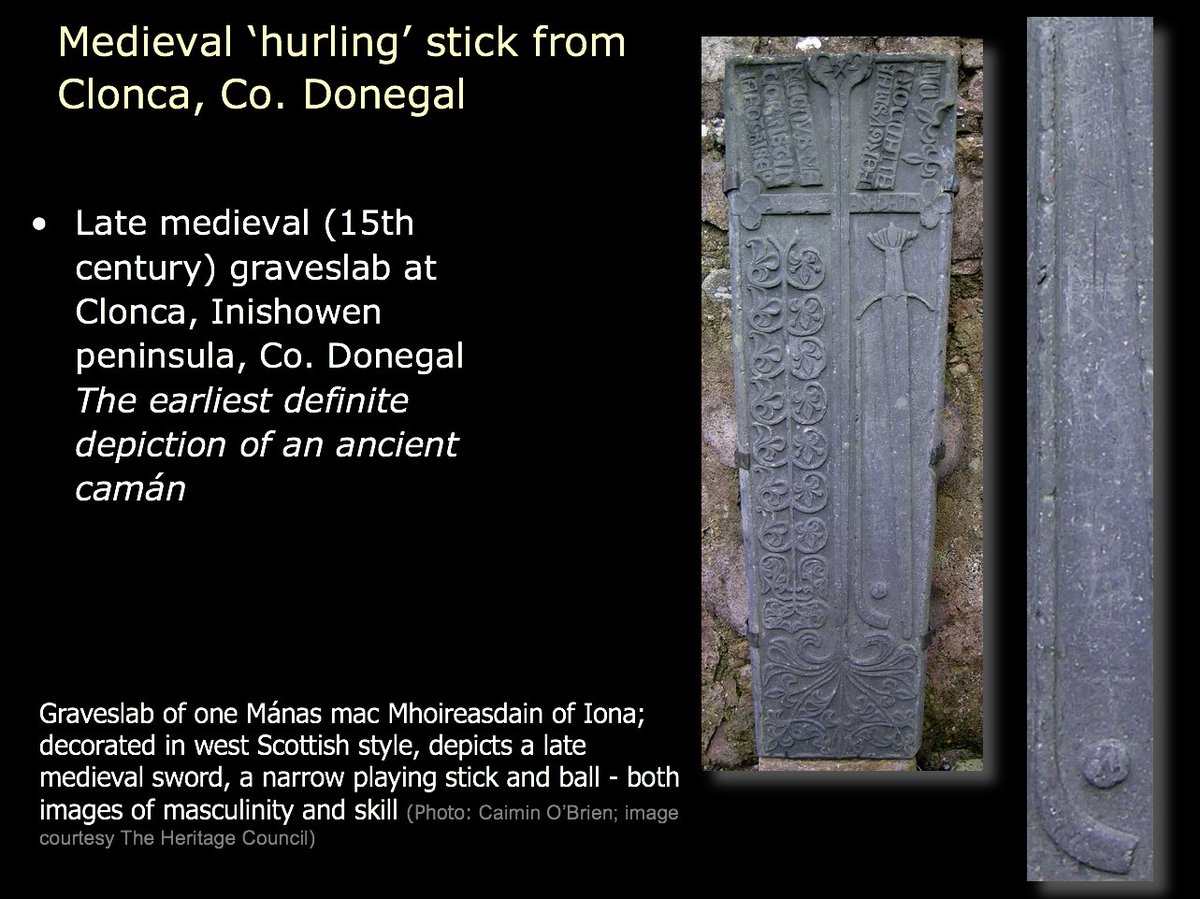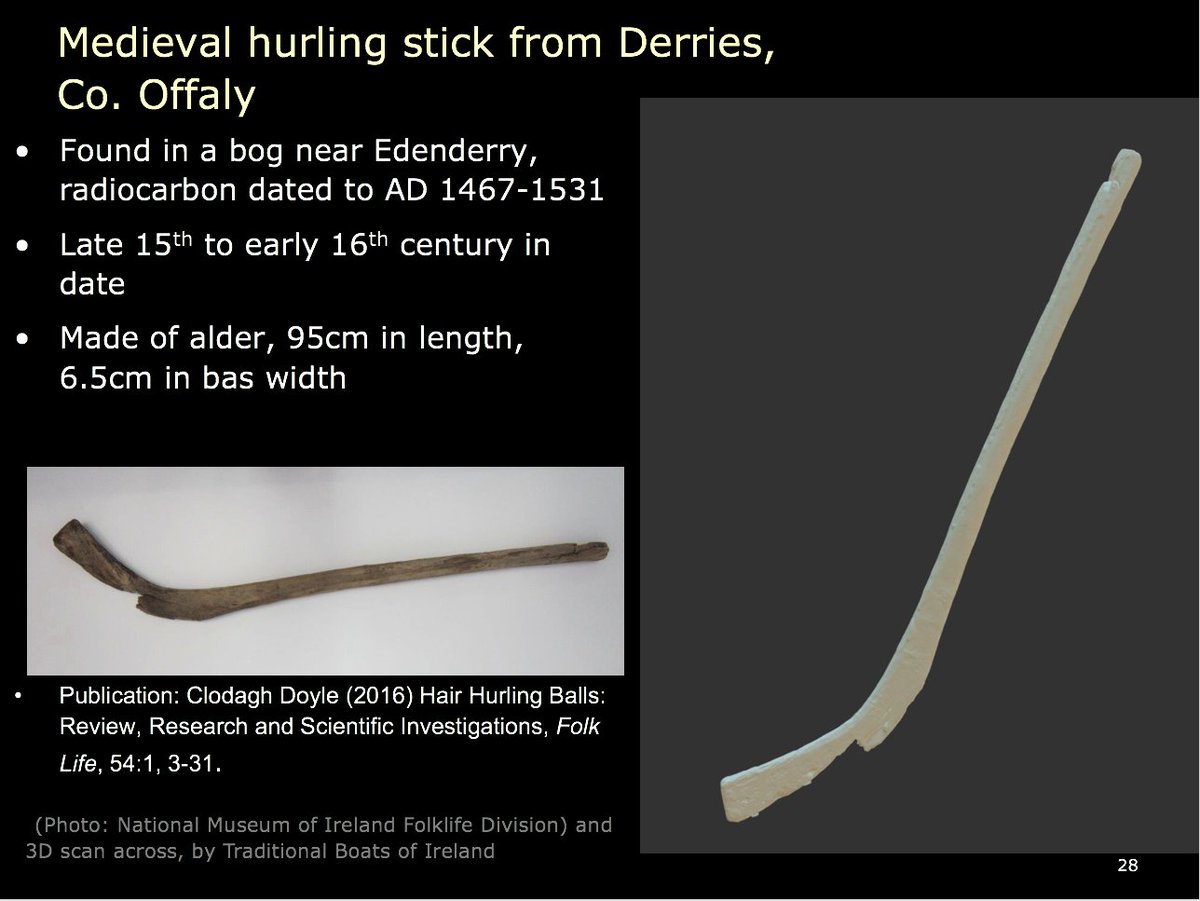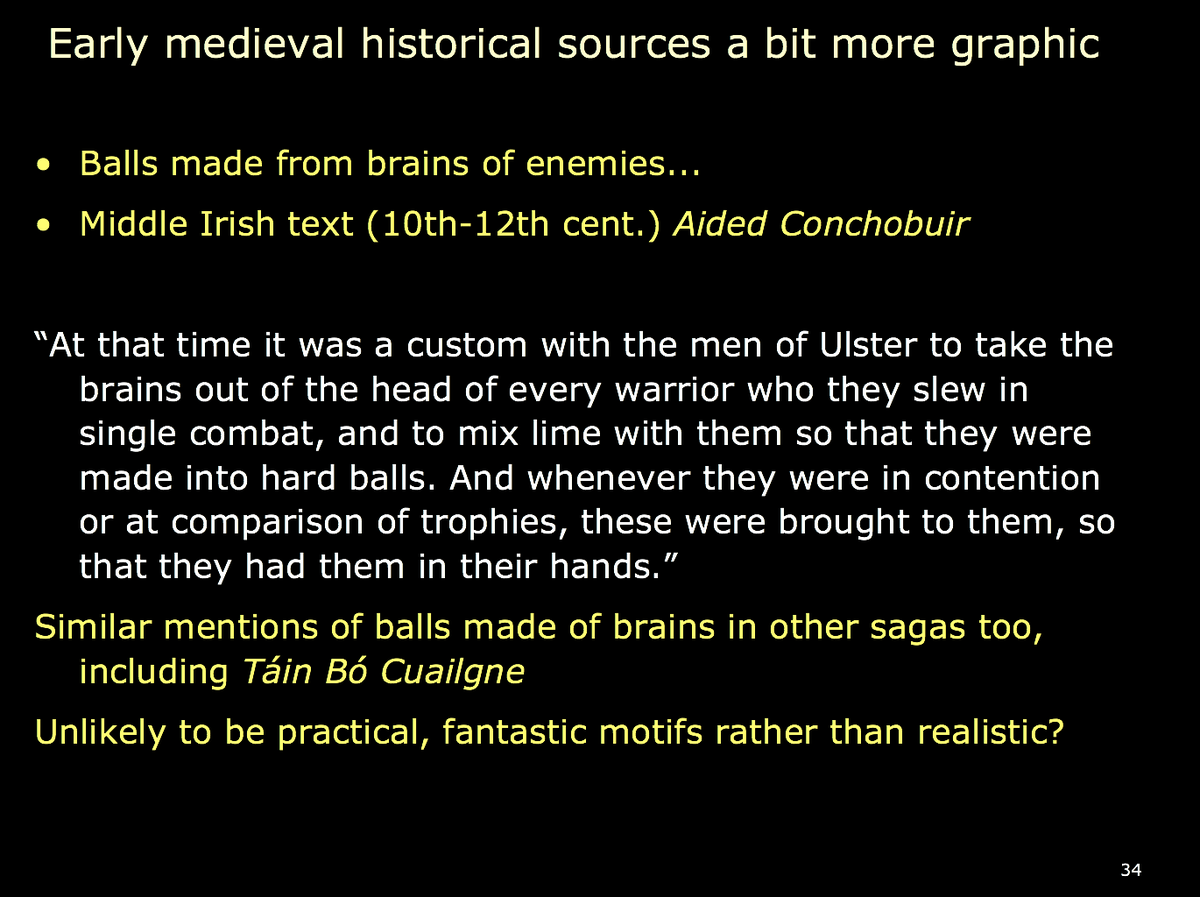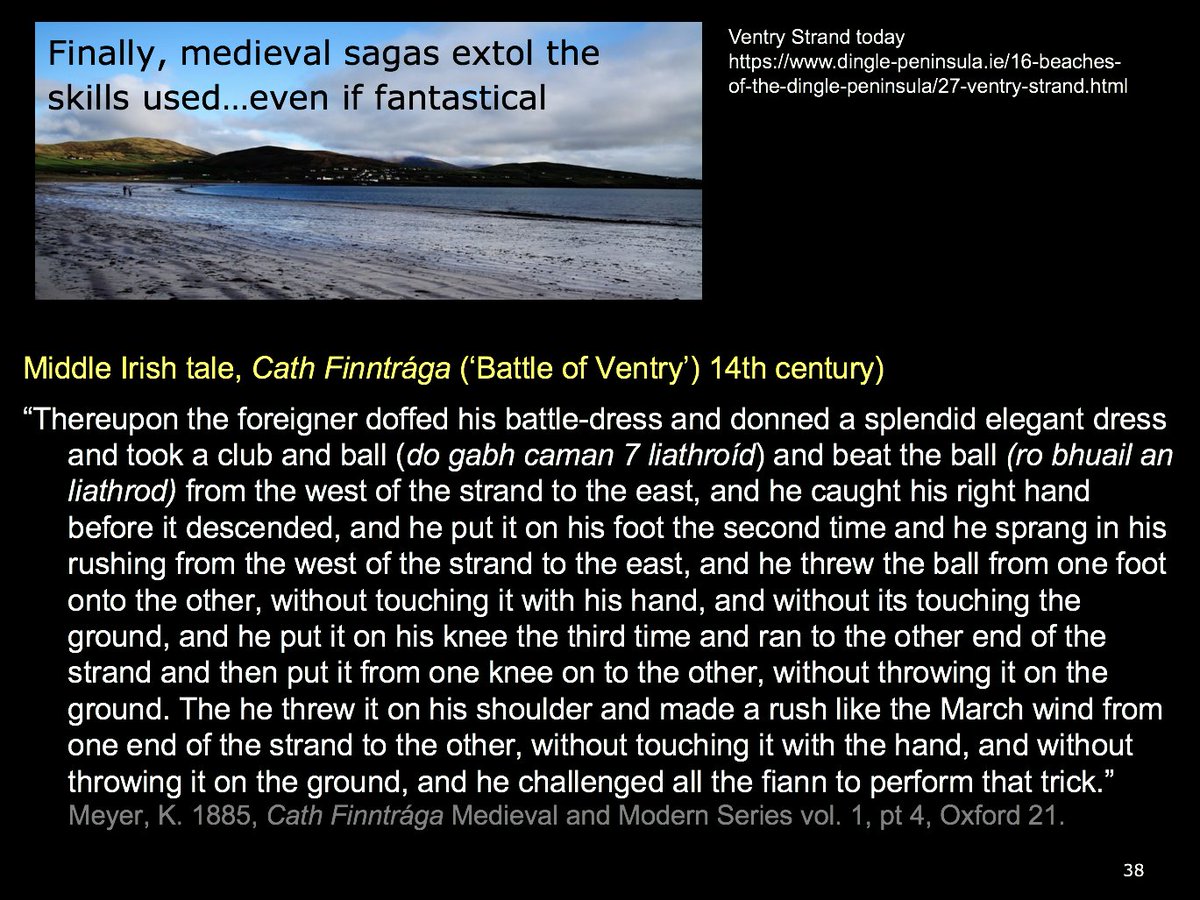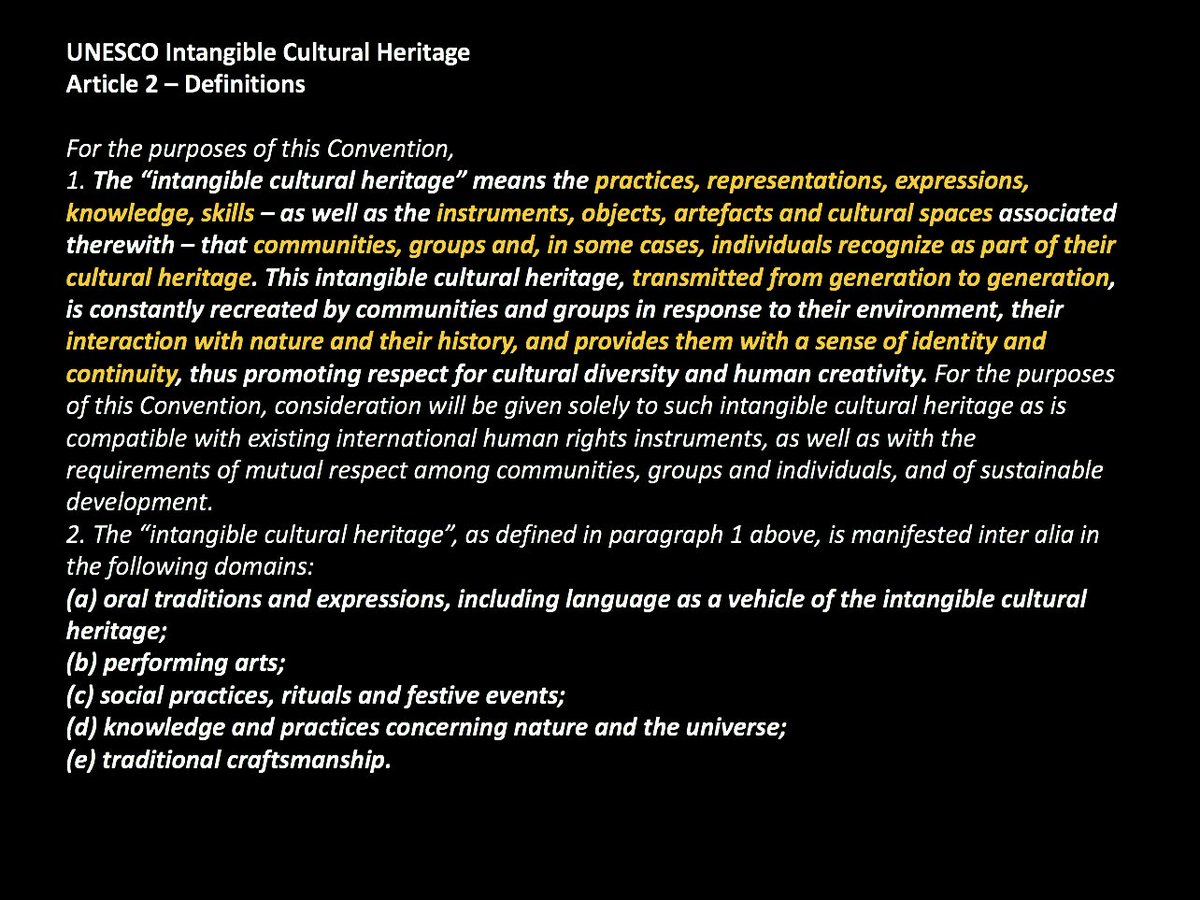1) What was "hurling" like in medieval Ireland (...or what game did Cú Chulainn play?). A twitter & #39;lecture& #39; with images, texts and weblinks, during the Covid-19 lockdown #camogie #hurling #medieval #Ireland If you& #39;re interested, more detail and sources at: …https://earlymedievalarchaeologyproject.wordpress.com/2016/09/02/hurling-searching-for-the-early-medieval-origins-of-irelands-ancient-game/">https://earlymedievalarchaeologyproject.wordpress.com/2016/09/0...
2) Who am I? Prof Archaeology @ucdarchaeology son of Clare hurler, once upon a time Wicklow hurler (I like to mention that often) from @ValleymountGAA & now @KevinsHurling member of @UNESCO @officialgaa @DeptAHG team that secured #ICH for hurling/camogie https://www.gaa.ie/news-archive/news/unesco-grant-hurling-and-camogie-cultural-heritage-status/">https://www.gaa.ie/news-arch...
3) Hurling & Camogie (both were inscribed by @UNESCO as global Intangible Cultural Heritage) are modern field sports, codified, organised by @officialgaa & @OfficialCamogie associations, using distinctly modern sports equipment. But, descend from games of early medieval origins.
4) Medieval echoes are not accidental! GAA have always linked to both ancient and modern traditions. All-Ireland Liam McCarthy hurling cup is a medieval Irish mether (feasting vessel), Camogie trophy is the Ardagh chalice; hurling/camogie medals are early medieval high crosses.
5) So, what, and how, do we know of actual medieval Irish stick-and-ball games? We have some archaeological evidence, some mentions in Old Irish law texts, a lot of descriptions in early Irish narrative literature (e.g. Táin Bó Cúalnge), we can reconstruct games (to some extent)
6) Most hurling histories (they rarely mention camogie) have tended to & #39;stretch & smear& #39; historical evidence - use texts from different periods to reconstruct the game of "medieval hurling" as being much like today& #39;s. It& #39;s more complicated, as Dr Angela Gleason demonstrated.
7) People in early medieval Ireland were interested in a range of recreations and leisure activities - including music, story-telling, horse racing, toys, games and field-sports. Although sources tend to emphasise upper social classes, we might imagine everyone taking part?
8) Old Irish law text mentions three types of games - "Hurling" is included in Ruidles-cluichi (harmless games) learned in childhood. Fíancluchi were more dangerous games (spears, horses, climbing), Colcluchi (“guilty games”) for adults (throwing javelins, aggressive & #39;fighting& #39;)
9) One challenge in understanding early medieval Irish texts describing games like immáin (‘driving’) or áon líathróti (‘ball-driving’) is "we" are not the intended audience. "They" knew exactly what these games were, the terms, techniques & moments of high skill e.g. @JoeyCan88
10) So, imagine you had never heard of hurling/camogie & read this sentence? We understand it because we know the & #39;net& #39; hangs at the back of the & #39;goals& #39;-& we& #39;ve often seen a shot high into the & #39;roof of the net& #39; (with apologies to @KilkennyCamogie & @KilkennyCLG & @DS_tone :-)
11) Let& #39;s begin with where the stick-and-ball games of immáin (‘driving’) or áon líathróti (‘ball-driving’) were played. Modern GAA pitches bejewel the Irish landscape, (see @gaelicfields ) and Croke Park is the cathedral of our games. In the past, there were & #39;hurling greens& #39;.
12) Early Irish sources often state that stick-and-ball games such as immáin (‘driving’) or áon líathróti (‘ball-driving’) were played on the & #39;faitche& #39; (‘green’) or cluichemag (‘games field’). In later times, travellers often described hurling matches occurring in specific places
13) Angela Gleason in her PhD describes how the early Irish understood in legal & practical terms how the & #39;faitche& #39; (‘green’) or cluichemag (‘games field’) should be used, managed & even how the "green [should] be maintained in time of games" (cartad oenaigh .I..in aimsir cluthi)
14) So, in the Táin Bó Cúalnge (Book of Leinster, late 12th cent.), Setanta and the other boys play on the faitche (‘green’) and cluichemag (‘games field’) of Emain (Navan) – and it may be that these words are just used interchangeably?
15) In the & #39;Tóruigheacht Dhiarmada agus Ghráinne& #39; (10th century tale, "The Pursuit of Diarmuid and Gráinne"), the king of Ireland holds a contest of driving (‘iomáin chumórtuis’) during a fair (áonaigh) on the & #39;green& #39; of Tara. https://en.wikipedia.org/wiki/The_Pursuit_of_Diarmuid_and_Gr%C3%A1inne">https://en.wikipedia.org/wiki/The_...
16) What were these stick-and-ball games like? Our best descriptions are in the stories of the heroic boyhood deeds of Setanta/Cu Chulainn in the Táin Bó Cuailgne-preserved in early and late 12th century versions, familiar to generations of Irish schoolchildren (and advertisers)
17) We get descriptions of fantastic “hurling” skills in Táin Bó Cúalnge-and we get different words for the stick (lorg áne, driving stick) & ball (liat[h]ráit), with the use of & #39;chammán crédunma 7 a líathroit n-argide& #39; to refer to his (very unlikely) bronze hurley & silver ball
18) In the Táin Bó Cúalnge (this below being the Lebor Laignech/Book of Leinster version, dated to the late 12th century AD), we have a description of Setanta taking on the boys, and scoring a goal: so, although fantastical, there is a sense of how a game might be & #39;won& #39;.
19) The Táin Bó Cúalnge (again, this below being the Lebor Laignech/Book of Leinster version, late 12th century AD), we also have a description of the violence of the game. It was in a sense training boys for conflict - (and good preparation, IMO, for Wicklow Junior Hurling) ;-)
20) What were the playing sticks-the lorg áne and/or cammáin (the same thing, I think) like in early medieval Ireland? We have no real idea-even in modern times sticks have evolved across time, Christy Ring& #39;s hurley (& mine indeed) are very different to the hurls(!) used today.
21) And hurleys varied in the past too, from broad bladed hurleys which you could use to strike the ball into the air (as Setanta did, remember), to narrower sticks more suited to ground-only tactics.
22) The early medieval Irish sources give us a range of hints and clues as to what sticks might have been like. They were used in various skills, could be owned as personal items, and might be decorated in some way (it& #39;s extremely unlikely there was ever a hurley of bronze)
23) Art Ó Maolfabhail (1973) in & #39;Camán: Two thousand years of hurling in Ireland& #39; originally suggested that these depictions of the biblical account of David killing a lion were actually a curved & #39;camán& #39; & & #39;líathróit?& #39; It& #39;s tempting, but they could be slings or shepherds crooks
24) On the other hand, this well-known late medieval depiction is definitely a playing stick. The Clonca graveslab of Mánas mac Mhoireasdain of Iona is decorated in west Scottish style, depicts a medieval sword, a narrow playing stick & ball-images of masculinity & skill
25) The most significant late medieval hurley was found at Derries, near Edenderry, Co. Offaly and analysed by the National Museum of Ireland& #39;s Clodagh Doyle. Made of alder, it dates to AD 1467-1531, or sometime in the late 15th/16th century See https://www.tandfonline.com/doi/full/10.1080/04308778.2016.1159789">https://www.tandfonline.com/doi/full/...
26) Clodagh Doyle of National Museum of Ireland has also extensively researched hair hurling balls held in National Museum of Ireland& #39;s collections. These were of cowhair cores with plaited, twisted horse hair covering, and some of have been dated to the 12th/13th century.
27) Early Irish sources were a bit more graphic, but these are unlikely to be realistic (one hopes...)
28) What about players, teams and strategies? It is interesting that the game of immáin (‘driving’), with its lorge ané (‘driving stick) & camán (‘little bent thing’) are very like “hurling/commons” of 17th/18th century...and both boys and girls played
29) Finally, it is evident that whatever the truth of the literary descriptions, that people of medieval Ireland appreciated the player who could do something special...
30) In November 2018, @UNESCO - after a long campaign by a team from @officialgaa & the @DeptAHG & @josephamadigan and my colleagues from @ucdarchaeology and @UCDHistArch - we succeeded in securing recognition of #hurling & #camogie as global Intangible Cultural Heritage

 Read on Twitter
Read on Twitter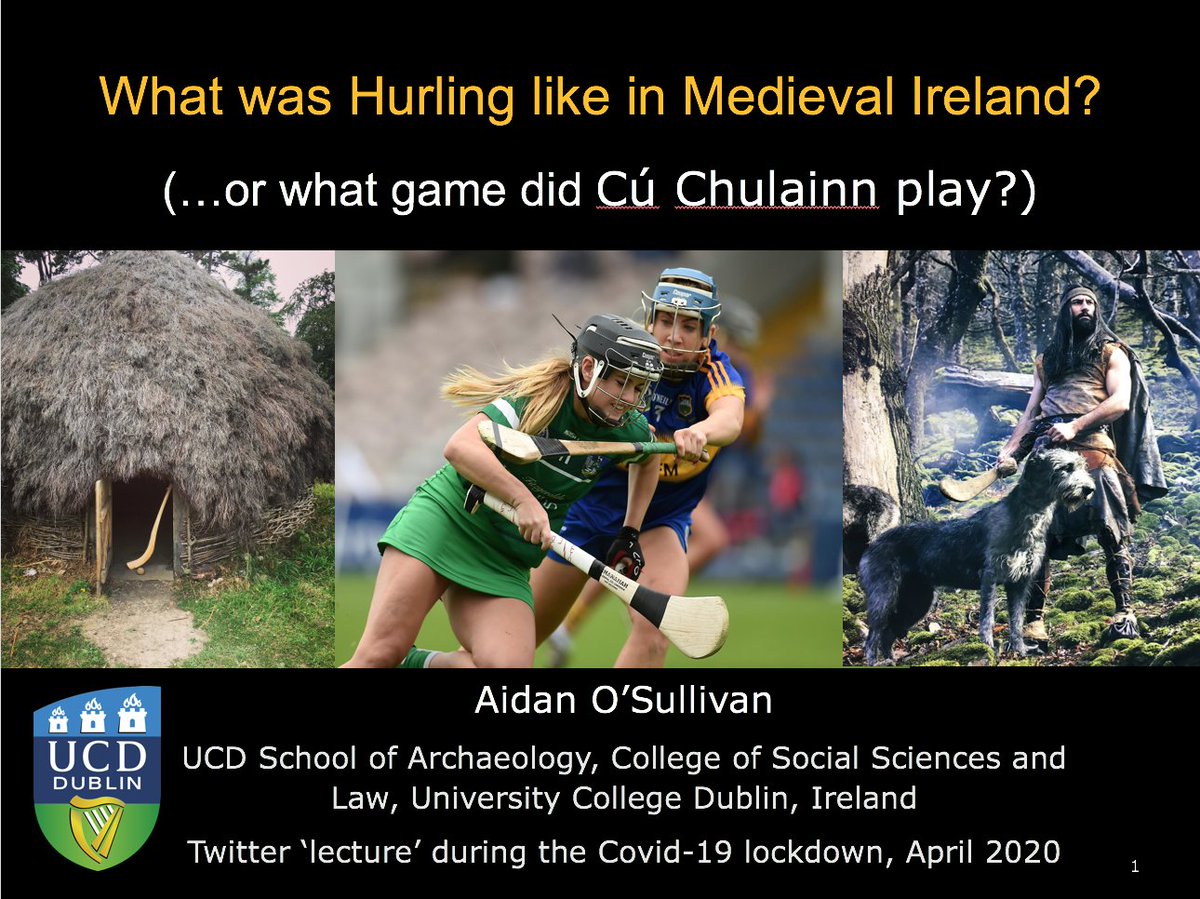


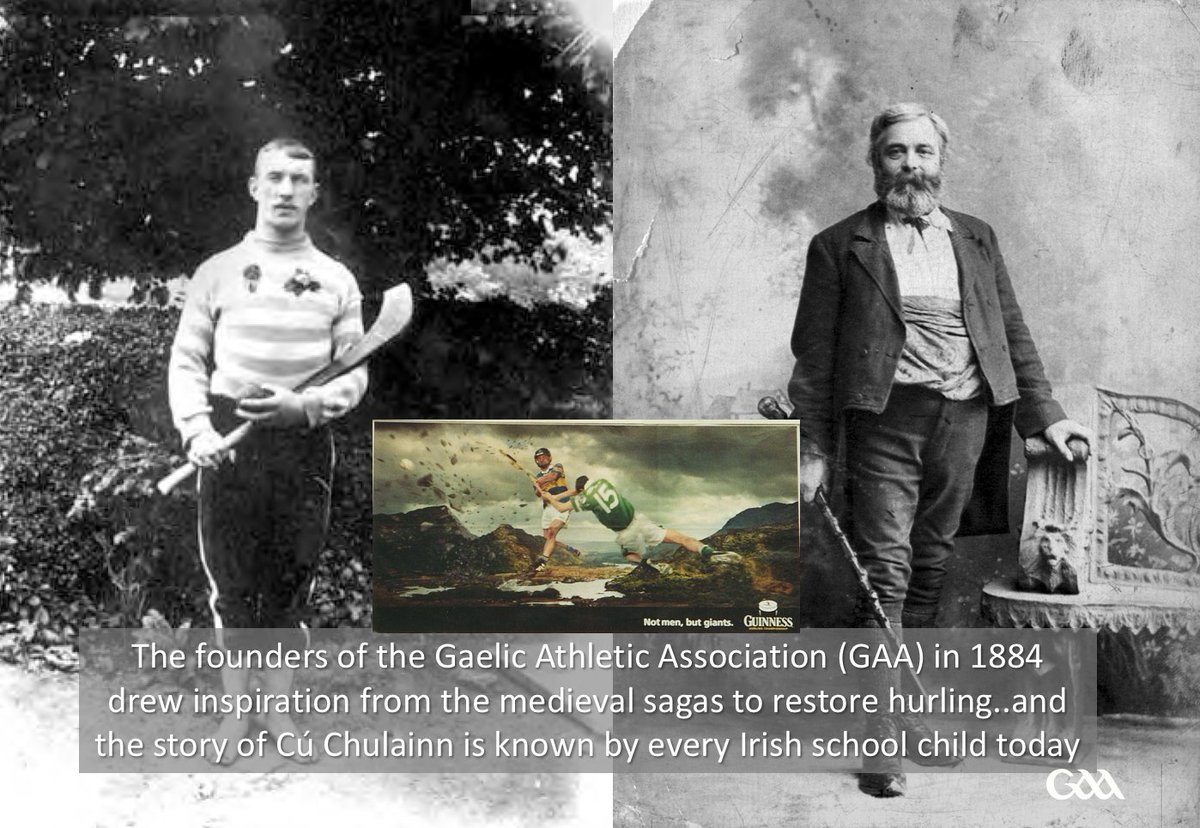
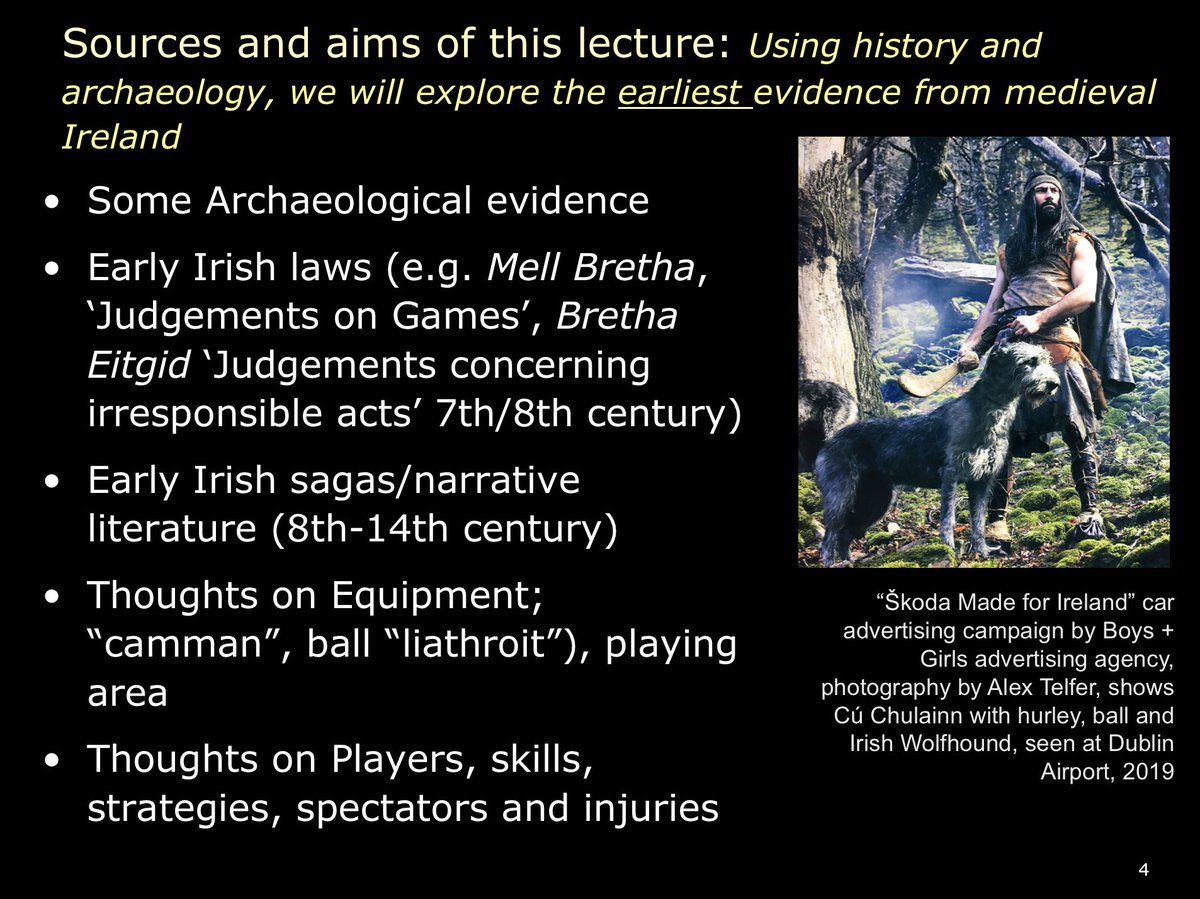
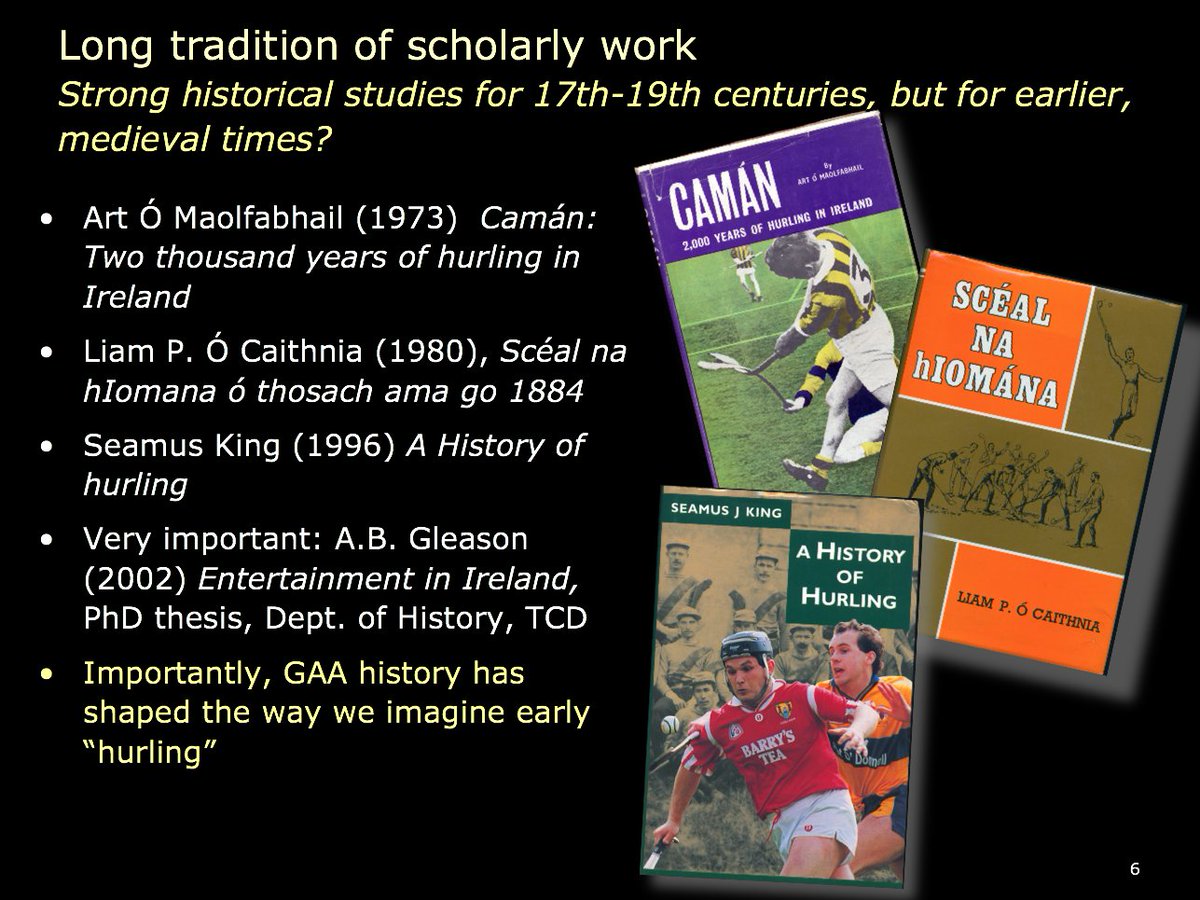



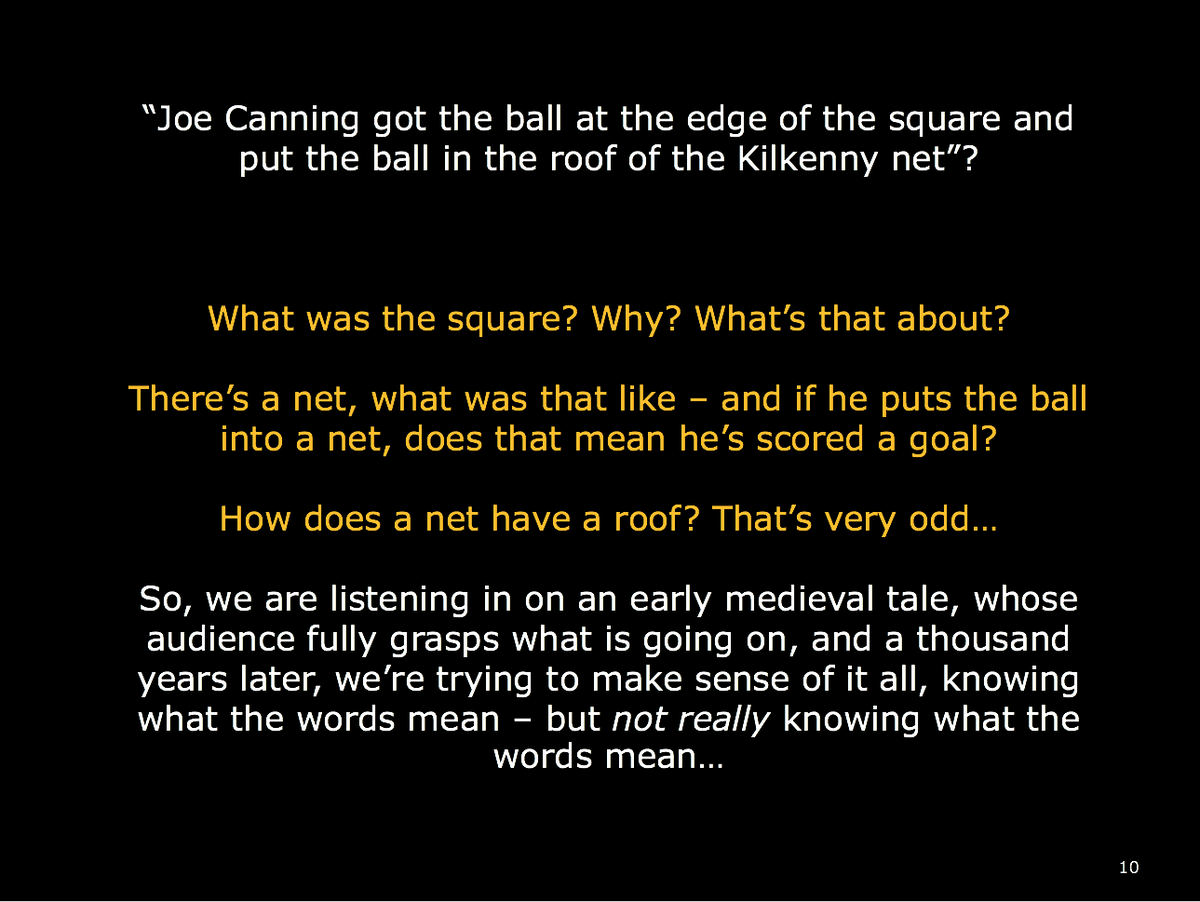

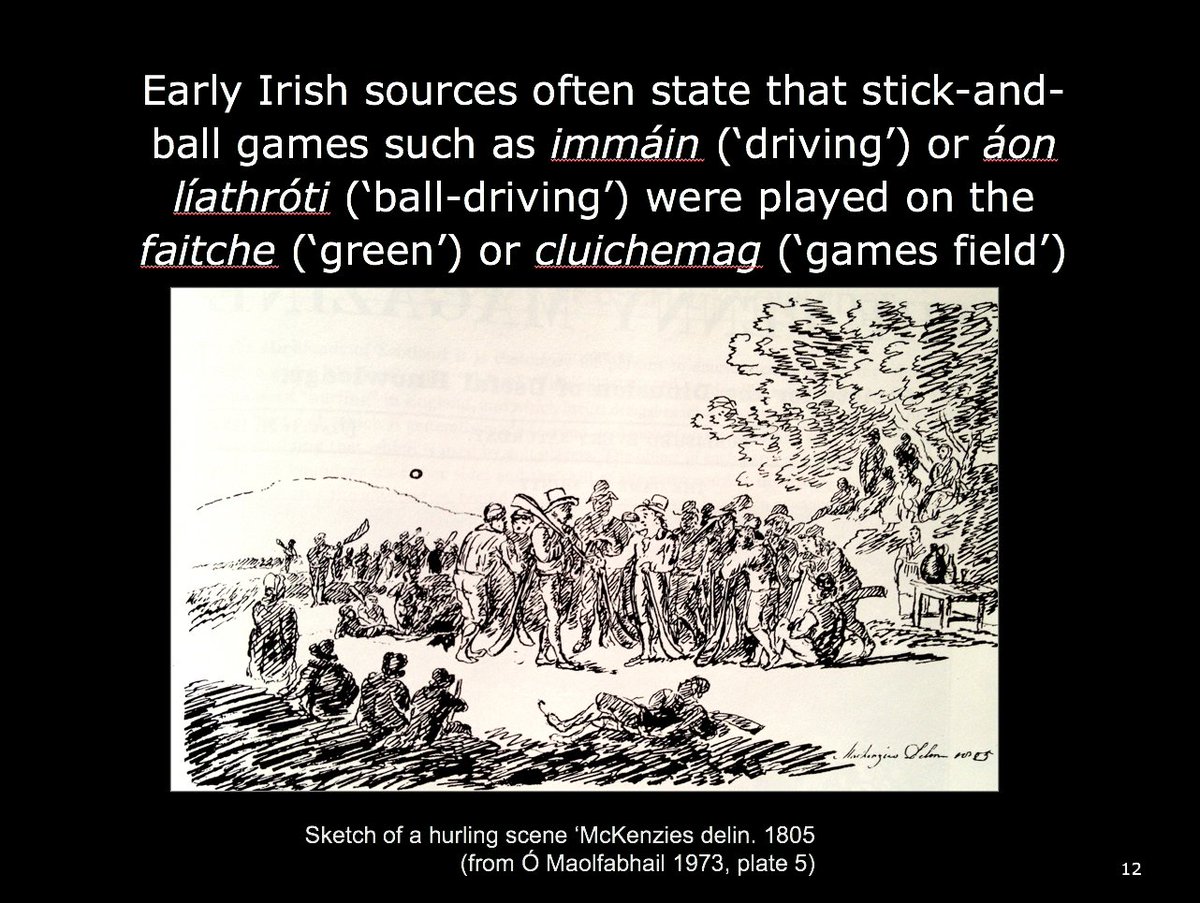
![13) Angela Gleason in her PhD describes how the early Irish understood in legal & practical terms how the & #39;faitche& #39; (‘green’) or cluichemag (‘games field’) should be used, managed & even how the "green [should] be maintained in time of games" (cartad oenaigh .I..in aimsir cluthi) 13) Angela Gleason in her PhD describes how the early Irish understood in legal & practical terms how the & #39;faitche& #39; (‘green’) or cluichemag (‘games field’) should be used, managed & even how the "green [should] be maintained in time of games" (cartad oenaigh .I..in aimsir cluthi)](https://pbs.twimg.com/media/EVUi44OWoAA6jwQ.jpg)
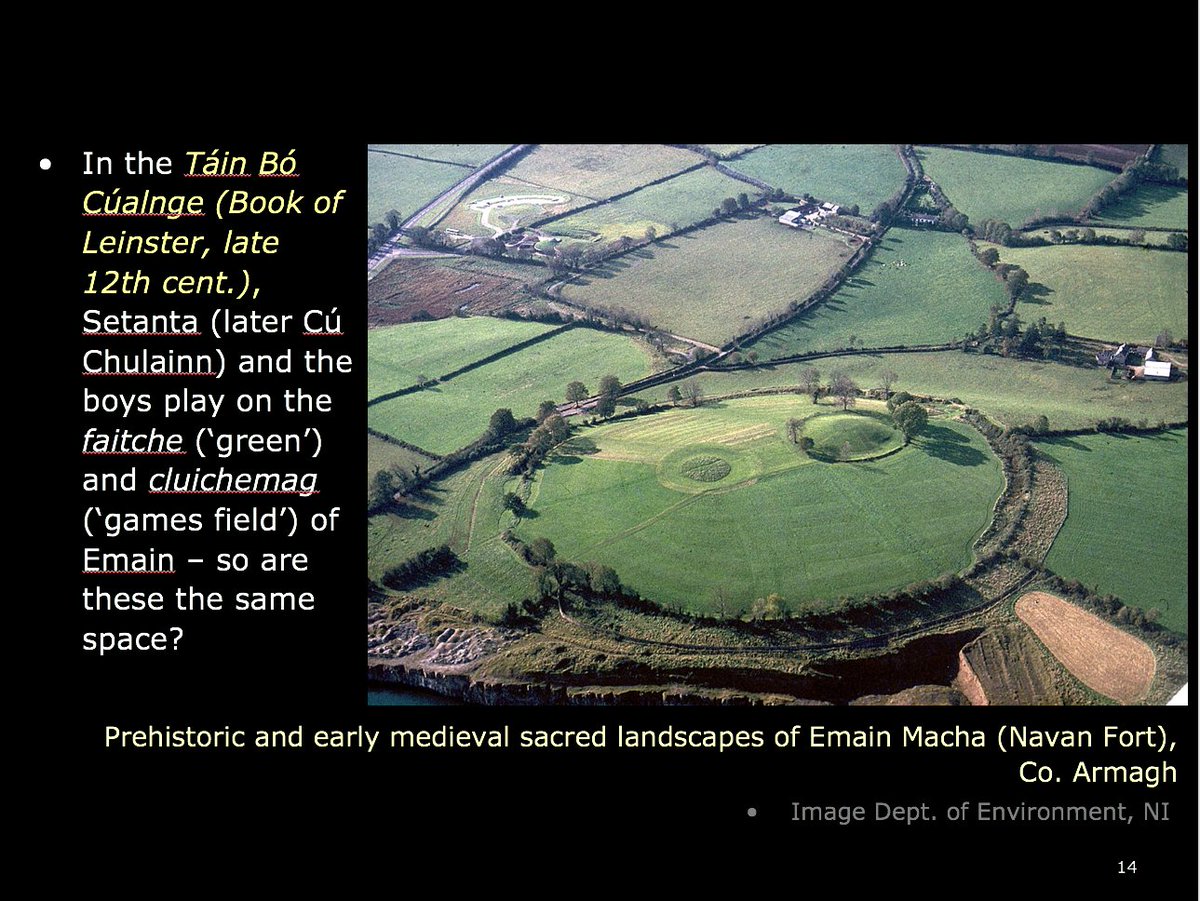

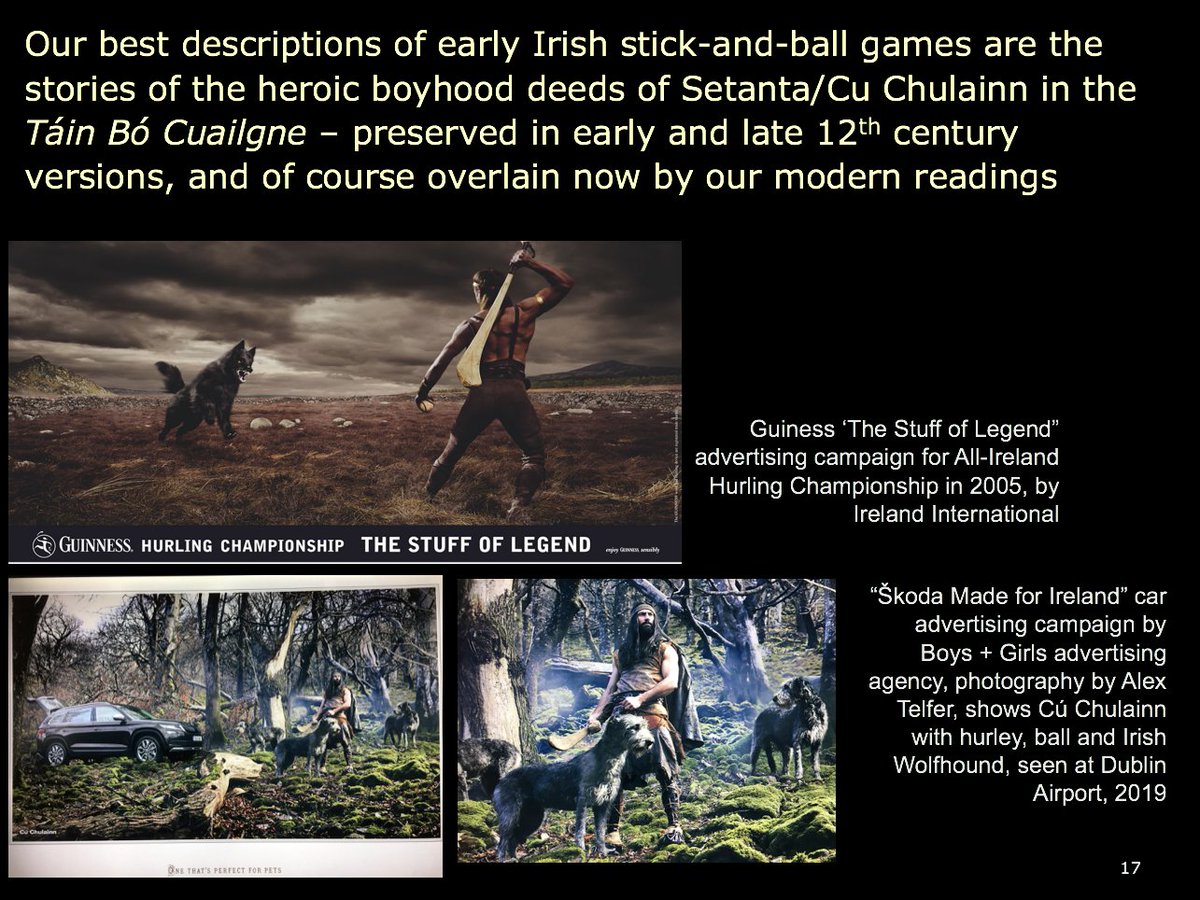
![17) We get descriptions of fantastic “hurling” skills in Táin Bó Cúalnge-and we get different words for the stick (lorg áne, driving stick) & ball (liat[h]ráit), with the use of & #39;chammán crédunma 7 a líathroit n-argide& #39; to refer to his (very unlikely) bronze hurley & silver ball 17) We get descriptions of fantastic “hurling” skills in Táin Bó Cúalnge-and we get different words for the stick (lorg áne, driving stick) & ball (liat[h]ráit), with the use of & #39;chammán crédunma 7 a líathroit n-argide& #39; to refer to his (very unlikely) bronze hurley & silver ball](https://pbs.twimg.com/media/EVUnOMBXQAEC6XV.jpg)
